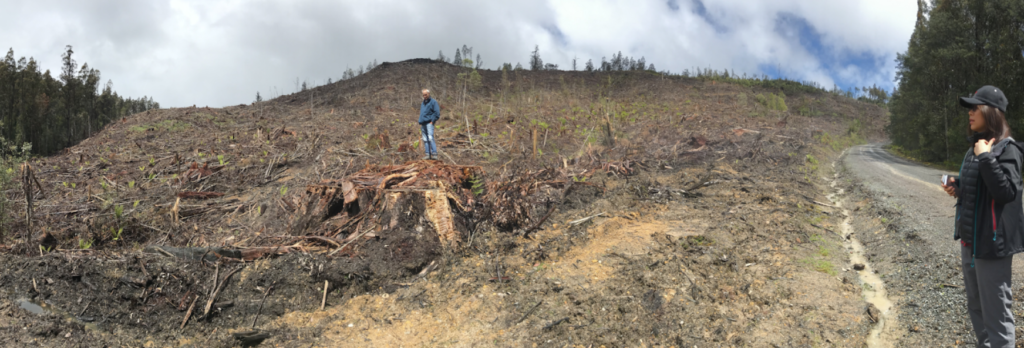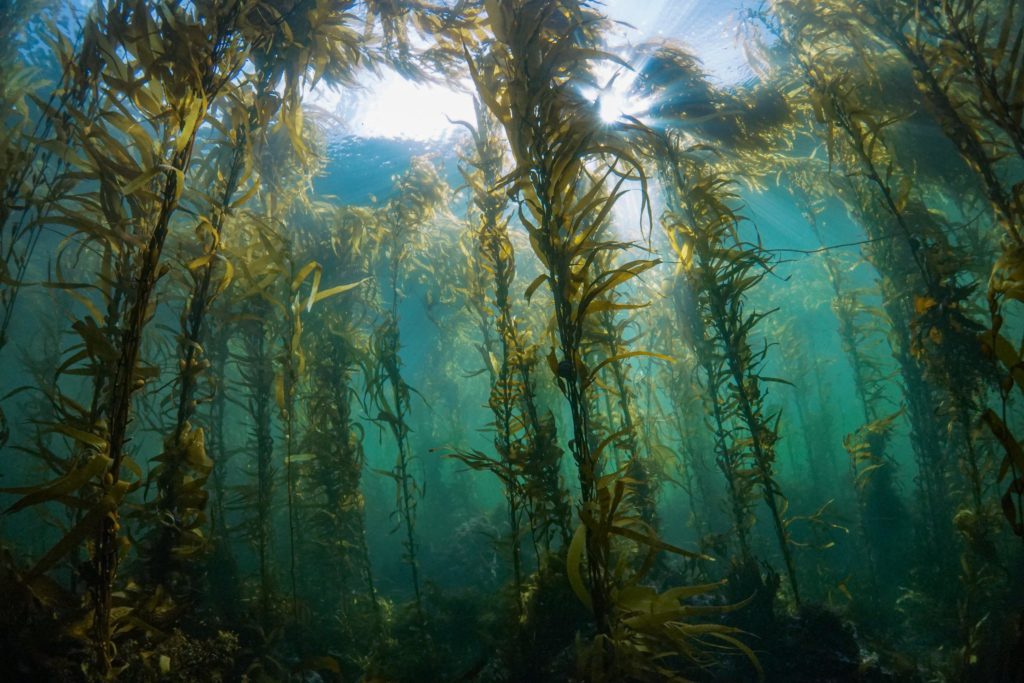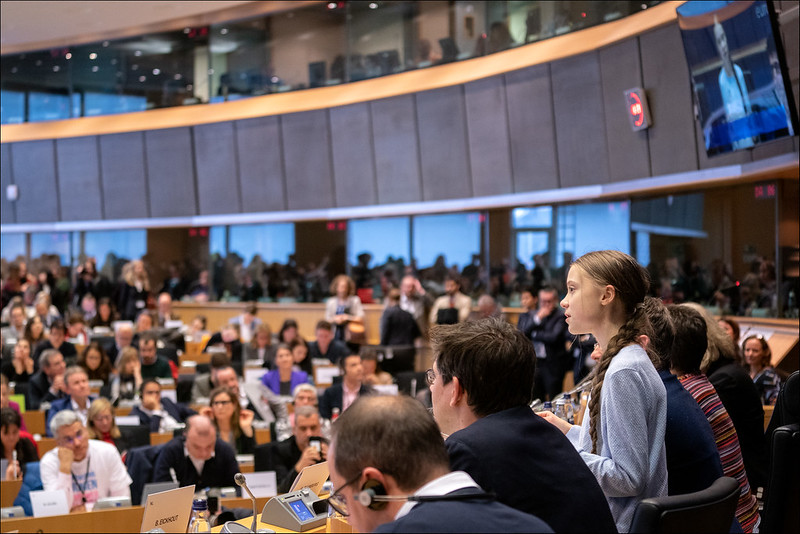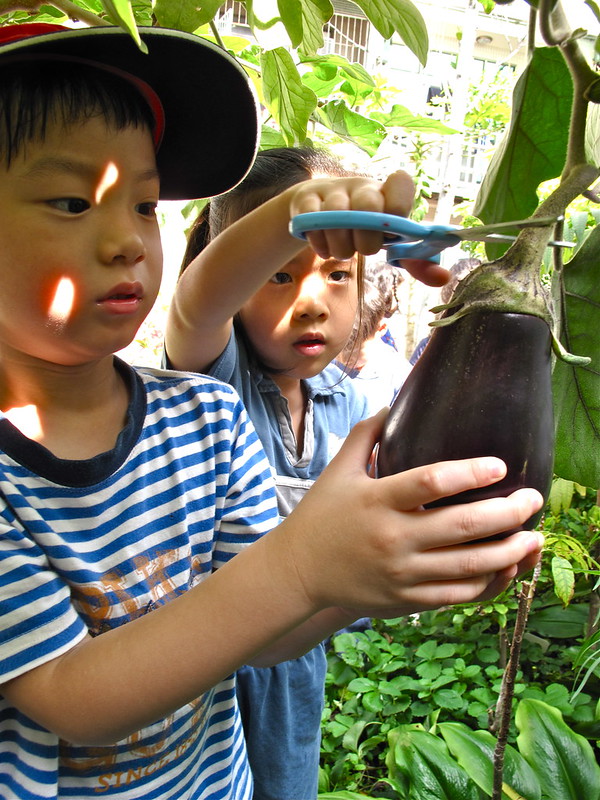The Friends' School 6H

Hello hello Friends Grade 6s!
Thank you for your questions about climate change. You asked some really interesting questions about taking action, impacts of climate change, concerns, weather disasters and future of our Earth.
You'll find answers to your questions from our climate experts below - have a read and watch their answers.
You can also have a look at what other classes across Tasmania asked this year, as well as our climate change toolkit.
Our Questions
This is a great question and a really important one, because if we can understand what the main threats of climate change are, we can do something about them! The first thing to understand is that we are talking about anthropogenic climate change. This refers to climatic changes caused by human activities (anthropocentric meaning human). Climate change is ultimately caused by releasing greenhouse gases into the atmosphere which contributes to global warming. You can find some great information about greenhouse gases, global warming and their relationship with climate change from Dr Beth Fulton and Deniz Yildiz.
Threats are, therefore, activities that contribute greenhouse gases to the atmosphere. The biggest threat and production of greenhouse gas emissions is our use of fossil fuels. Fossil fuels are hydrocarbon-containing materials, such as coal, petrol and natural gas, formed underground from the remains of dead plants and animals a long, long time ago that humans extract to use for things like generating electricity, driving cars and machinery.
Another major threat is deforestation which is the cutting down and often burning of forests, such as the Amazon rainforest, and also forests here in Tasmania.

Intensive agriculture contributes significantly to the release of greenhouse gases to the atmosphere as well. Cows and sheep produce large amounts of methane (a greenhouse gas) when they digest their food, and this gas adds to the greenhouse effect on the Earth. Furthermore, animals need fields to graze on, and this leads to deforestation.
The use of nitrogen fertilisers to support intensive agriculture is another contributor to climate change because they produce nitrous oxide emissions.
Last, but by no means least, fluorinated gases contribute to greenhouse gas emissions. These particularly damaging gases are emitted from equipment and products such as commercial and industrial refrigerators, air-conditioning systems and heat pumps. Such emissions have a very strong warming effect, up to 23,000 times greater than that of carbon dioxide.
What is important to remember though is that there is great work being done to combat ALL of these threats.
Climate change is a major threat to Australia’s coastal marine ecosystems, such as kelp forests, seagrasses and coral reefs. Each of these habitats needs shallow sunlit waters to photosynthesise, and so they cannot move into deeper cooler waters to escape warming temperatures or migrate south like mobile animal species.
Some ecosystems are more ‘exposed’ to change than others. Warming does not occur at the same rate everywhere. Some regions like the Arctic and south-east Australia are warming very fast and therefore have ‘high exposure’ to climate change, whereas other regions are warming very slowly.
The other way we can tell how threatened a plant or animal is is to find out how close it is living to its ‘thermal tolerance limit’ - or the warmest temperature at which it can survive. A population living in a place that is already as hot as it can handle will not respond well to further warming. But if it is living in a place that is cooler than it can tolerate, it is more likely to survive. In Australian kelp forests for example, many of the same species can be found from Tasmania up to northern NSW. Tassie reefs sit at the cool end of this distribution. As a result, many species on Tasmanian reefs are likely to respond quite well to climate change for some time. In NSW by contrast, these same species are at the warm edge of their distribution, and so they may not survive any further warming in NSW.

Kelps, corals, seagrasses and mangroves are all examples of what we call ‘foundation species’. The loss of corals from a coral reef or kelps from a kelp forest fundamentally changes the ecosystem and species that it can support.
Globally, coral reefs are considered to be very threatened from climate change as they are already living close to the warm limits that corals can survive at. As a result, summer temperatures that 1-2ºC above a typical summer can lead to coral bleaching and death. Elsewhere in the world, kelp forest ecosystems are considered to be more tolerant to warming. In Australia, however, coral reefs, kelp forests and seagrass ecosystems have all been severely impacted by warming in different places.
This is an excellent question, and one of the questions most students want an answer to. You can be someone who takes climate action!
Each of us can act individually (on our own) and collectively (together with others) to act on climate. We know, from scientific evidence, that climate change cannot be stopped and is happening already – but it can be reduced and slowed down. People today and into the future (including you) can make changes and decisions that will greatly reduce climate change and its impacts.
Some of these decisions are happening on a systemic scale - they the really big changes we need to reduce emissions from industries and electricity generation.
For example, world leaders are meeting together at COP26 (which is the UN Climate Change Conference of the Parties) to discuss pathways to do this – in particular, to ensure that global temperature rises do not exceed 1.5 degrees, and how we can adapt to climate change impacts into the future. If we can manage to greatly reduce global greenhouse gas emissions (such as carbon dioxide) we can limit climate change.
You might wonder how young people can influence big changes like this? By using your voices! Young people are involved in many groups and movements such as the School Strikes for Climate that have already made a difference to the way world leaders think about climate action.

At a smaller scale, all of us can do something to make positive changes and have an impact on tackling climate change. Some people can do more and less than others, and that is OK - it’s great actually because lots of small changes can lead to big impact. In everyday life, there’s lot that you might be able to do, for example:
- You can aim to take the bus or walk, or ride your bike to school more.
- You could eat more vegetables, and eat meat less often (maybe even encourage your family and friends to have ‘meat free Mondays’?!). Plant-based foods generally produce fewer greenhouse gas emissions and they also require less energy, land, and water usage.
- You can speak up! Tell your friends and family about climate change and the small changes each of us can do to make a difference - remembering that we all have different abilities to make these changes, big and small.
There are a lot more ideas you can check out on our 'What can I do?' page.
Many people are worried and frustrated about climate change and want to know what they can do to help. Studying the impacts of climate change and rising ocean temperatures on the Great Barrier Reef over the last decade has certainly convinced me that this is the most serious issue of our time.
We hear quite a lot about what we can do in our own lives to reduce the carbon emissions into the atmosphere that drive climate change. Anything that lowers energy consumption helps reduce the need to burn fossil fuels and gives us time to transition to renewable energy sources such as wind and solar. For example, driving less by walking, riding or taking public transport where we can. Even what you eat makes a big difference (so maybe limit ‘BBQ Meatlovers’ to special occasions). We can go a step further and help remove carbon from the atmosphere by growing trees. The reason that Tasmania is currently removing more carbon from the atmosphere than it puts in (i.e. better than net zero emissions) is the natural regrowth of Tasmanian forests.

One thing that I also like to do is avoid unnecessary generation of methane, which is much more potent than carbon dioxide as a greenhouse gas and responsible for more than 30% of the global temperature increase. If you dispose of food and garden waste with your garbage, it will be buried and breakdown without oxygen (anaerobic process) to produce methane that eventually escapes into the atmosphere. However, if you put organic waste into your home compost or council compost bin, microbes can access oxygen when breaking it down (aerobic process) thereby producing very little methane as well as compost that will help grow new carbon absorbing plants.
Finally, we should all try to stay informed and express our views on what actions need to be taken. Students currently in college will be the ones asked to deal with the largest consequences of climate change. You’re entitled to have a say.
It is increasingly recognised that the current level of global funding in climate mitigation (reducing global emissions) and adaptation (disaster mitigation through minimisation of exposure and/or vulnerability to climate hazards) is nowhere near that needed to achieve the transition to a sustainable, net zero emissions and resilient world. Funding needs to increase drastically everywhere to meet this need.
At the moment, climate funding everywhere is focussed on supporting mitigation activities to reduce emissions, via renewable energy investment and shifting high emitting industries such as transport to low emission alternatives. Adaptation activities account for less than 10% of total available funding.
Measuring how well countries are adapting to climate change is very difficult, but we can measure how much countries have reduced their emissions. Other countries have been able to reduce their emissions more than Australia. CO2 emissions in the UK were almost 50% lower in 2020 than in 1990. Germany, Russia, and France have also managed to substantially reduce their emissions. The US were about 11% lower. In contrast, Australia’s emissions increased by approximately 40% over this period. China and India have seen an over 300% increase in emissions over this period associated with their economic growth.
Whilst China’s emissions have grown substantially, they are spending the most money of anywhere to reduce this. Almost a third of climate funding is spent in China, which has led to China’s production being much more efficient than in the past.
Climate funding in Australia is much lower. Less than 2% of global climate funding occurs in Australia, NZ and PNG combined.
This year, Australia updated its climate change commitments, pledging to reduce greenhouse gas emissions by 43% below 2005 levels by 2030. This compares to commitments by 2030 of other countries (US: 50-52% below 2005 levels; China 60-65% below 2005 levels; UK 68% below 1990 levels; EU: 55% below 1990 levels).
Australia has also this year announced major programs that will support adaptation activities, and we hope will improve Australia’s ability to withstand future climate disasters.
Further reading:
Naran, B. et al. Global Landscape of Climate Finance 2021 (Climate Policy Initiative, 2021).
Crippa, M., Solazzo, E., Huang, G. et al. High resolution temporal profiles in the Emissions Database for Global Atmospheric Research. Sci Data 7, 121 (2020). https://doi.org/10.1038/s41597-020-0462-2
Australia has seen plenty of climate related disasters in recent years. Most recently during the past year, floods in Qld, NSW, Vic, SA and Tasmania have been very damaging and costly to communities across the country.
Before the floods, we saw widespread bushfires during the summers of 2019/20 (mainland Australia) and 2018/19 (Tasmania), which motivated a Government investigation into how Australia can improve its National Natural Disaster Arrangements. The outcomes of that report states ‘Australia’s disaster outlook is alarming, with climate change exacerbating bushfires, extreme rainfall and flooding’.
‘Responding to climate disasters’ requires action in many ways.
- We should seek to prevent disasters. This would include activities like removing or reducing the population that live in areas that are exposed to climate hazards like floods or bushfires.
- We should be well prepared for disasters. This would include activities like having accurate early warning systems, that initiate action to minimise impacts in the immediate lead-in of a hazard event.
- We would be well positioned to respond during an event. During the time of crisis, we should have the resources to assist people in need and minimise harm.
- We should be able to support communities to recover after an event. After a disaster has struck, it takes a lot of time and effort for a community to recover to what it was beforehand. Ideally, we should aim to recover to be better prepared for future events (build back better).
Currently, almost all of the money spent on disasters is during the event (responding) or after (recovering). We should aim to be better prepared in the first instance, to minimise any damage happening at all.
Responding to the climate crisis needs us to both
- reduce our emissions as fast as possible (e.g., the emphasis on emissions reduction and targets for net-zero), AND
- invest early in climate change adaptation and/or disaster mitigation (e.g., steps to minimise the adverse impacts of foreseeable hazards, by reducing the exposure and/or vulnerability to those hazards), to manage the climate change impacts already committed.
Further reading:
First, I would like to say that it is normal to feel distress when you see footage of extreme weather events and think about the effects of climate change. Watching such footage can be genuinely terrifying, and reacting to this with distress and worry is a completely appropriate reaction and nothing to feel ashamed about. There are a number of simple things you can do to start off with which I will outline below. However, if you find these feelings of distress are continuing, please do tell a safe adult that you trust about what you are going through, or find help through the resources available through our page on feelings about climate change.
- Turn off the news: Whilst it is important to know what’s going on in the world, accessing a constant stream of distressing images about the climate crisis (what some people call “doomscrolling”) may disproportionately prioritise your attention on these events, compared to other things like study and opportunities for connection at home or school. One good idea is to have regular breaks from news and social media feeds that show these images in order to give your mind a break.
- Talk to your friends: Make time to socialise with friends and talk to others you can trust about your worries, knowing that you are not the only one going through this is very helpful.
- Find adults who are in solidarity with you about addressing the climate crisis: There are many adults also concerned about climate change who would love to talk or get you involved in their work (for example, all those who contribute to the Curious Climate programme). Find ways of connecting with their organisations or get involved in school or citizen science projects so you can learn from others and find a sense of community.
- Know you can get help: If you are so distressed this is making it hard to go to school, study or do other basic things in life, talk to a GP, school counsellor or Kids Helpline as early as possible to see what help is available.













